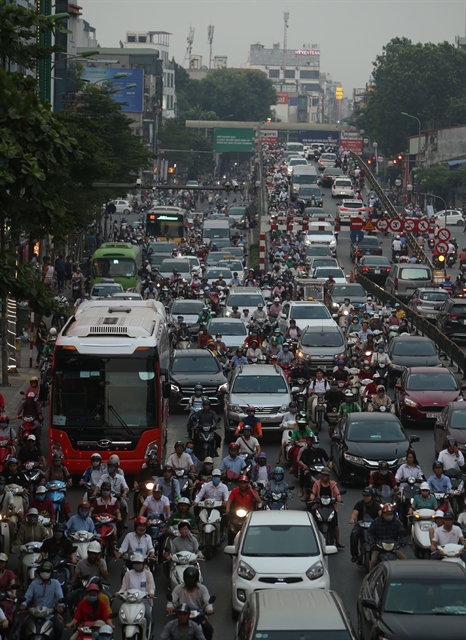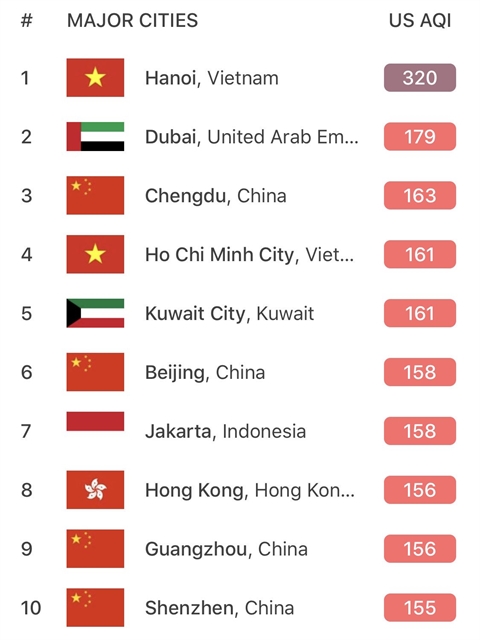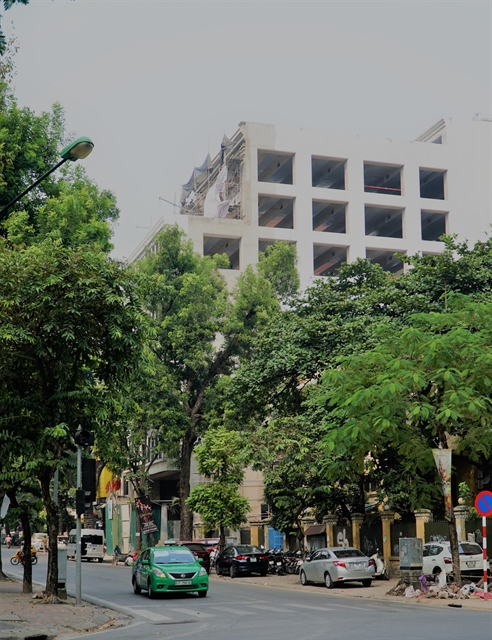by Ollie Arci

CONGESTED: Traffic is a major source of pollution. VNA/VNS Photo Danh Lam
Over the last few days, the air quality in Hà Nội has hit hazardous levels. The smog continues to blanket the capital, with AQI indicators soaring past safe levels and seeming to stay there. In less polluted environs online, social media feeds are full of concerned citizens scrambling for the best face masks and most efficient air purifiers.
The panic is only partly justified, as the city has seen a number of days over the last few years on which the air is thick with PM2.5.
The quality of the air we breathe is a tricky beast, with a range of factors impacting the local climate on a day-to-day basis. Việt Nam’s rapid pace of development, which has averaged about 7 per cent annually recently, has worsened the quality. However, the increasing traffic density, agricultural practices and the activities of our neighbouring countries also play a part in the phenomenon.
Hà Nội, and other Vietnamese cities, regularly make an appearance on must-visit travel lists and top experiences, yet there are few celebrations for topping the charts for ‘world’s most polluted’. The image of Việt Nam, and its capital, should rightly be based on rich cultural heritage and cuisine, not the sight of people wearing masks.
Other big cities have previously suffered the same fate, often to a much greater degree. For example, the five-day ‘Great Smog of London’ in 1952 and the New York City smog in 1966. Both events were born from the unfortunate combination of pollutants and weather, with coal dust trapped by masses of stagnant air. Even today, major cities across the world see days or weeks where air quality plummets and emergency measures are needed to clear the haze.
The coalescence of heavy industry and weather phenomena were once enough to choke citizens and reduce visibility to zero. Luckily, we are not at that stage yet.
However, downloads of air quality monitoring apps have soared, indicating an increased awareness of pollution and its effects on health. People around the world have been inspired by Greta Thunberg’s example and staged ‘climate strikes’ in major cities.
The young girl’s campaign, if nothing else, has brought the issue much-needed attention and pushed the problems of rapid development and environmental ignorance to the forefront of discussion. Accelerated growth picks people up from poverty, but weighs the other side of the scale with more construction, production, vehicles and subsequent emissions.

CHOKING: Air quality in Ha Noi reached hazardous levels in recent days. Photo courtesy of AirVisual
The vast amounts of energy needed to power Việt Nam’s future expansion are currently derived from the same coal that dirtied the skies of London and New York over half a century ago. So it’s no wonder we now see the AQI number skyrocketing past the safe limit and into the 200’s and 300’s.
Meteorological factors may well be out of our control – Hà Nội’s position between mountains and sea is prime for trapping air until cold fronts come and sweep the smog from our skies. Additionally, the burning of rice straws north of the border is sure to continue. But measures can be taken to ensure air quality doesn’t reach extreme levels quite so regularly.
The Vietnamese capital is home to 5.5 million motorbikes and more than 500,000 cars. With a rapidly increasing population and burgeoning middle class, these figures will only rise. The causes for Hà Nội’s haze are manifold and bikes can’t shoulder all the blame for the bad air, but clogged streets are clear contributors to the problem.
New York has adopted congestion pricing in Manhattan, while London has introduced the world’s first 24-hour Ultra Low Emission Zone alongside the existing congestion charge. Madrid, Paris and Oslo all have their own ‘car-free’ policies to varying degrees.
Authorities in Hà Nội plan to ban motorcycles from downtown areas by 2030. According to the Director of Hà Nội’s Department of Transportation, Vũ Văn Viện, a ban is crucial to solving these problems and will push people towards public means of transport.
Notice, however, that the ban fails to include cars, which are both a bigger threat to the smooth flow of traffic on narrow city streets and greater contributors to pollution.
Hà Nội also plans to boost the use of public transport, opening new bus routes and moving to make the existing ones more prompt and efficient.
Attempts to limit the use of small coal-burning stoves have seen varying degrees of success, but perhaps with increased awareness over the long-term health impacts of bad air, these activities will begin to fade out naturally.

DEVELOPMENT: Construction projects across the city cause major dust pollution. VNS Photo Ollie Arci
The biggest contributor to the problem – the use of fossil fuels – is a more difficult one to solve. The country has ample potential for the development of renewable power, but these sources do not yet meet the needs of reliable energy.
These efforts can all contribute to making sure the drop in air quality is a blip, and we start to see clearer skies ahead. The current pace of growth needs a healthy dose of sustainability – ensuring the capital city remains a healthy and desirable place to live, topping the charts for tourist arrivals in the years to come. VNS
OVietnam